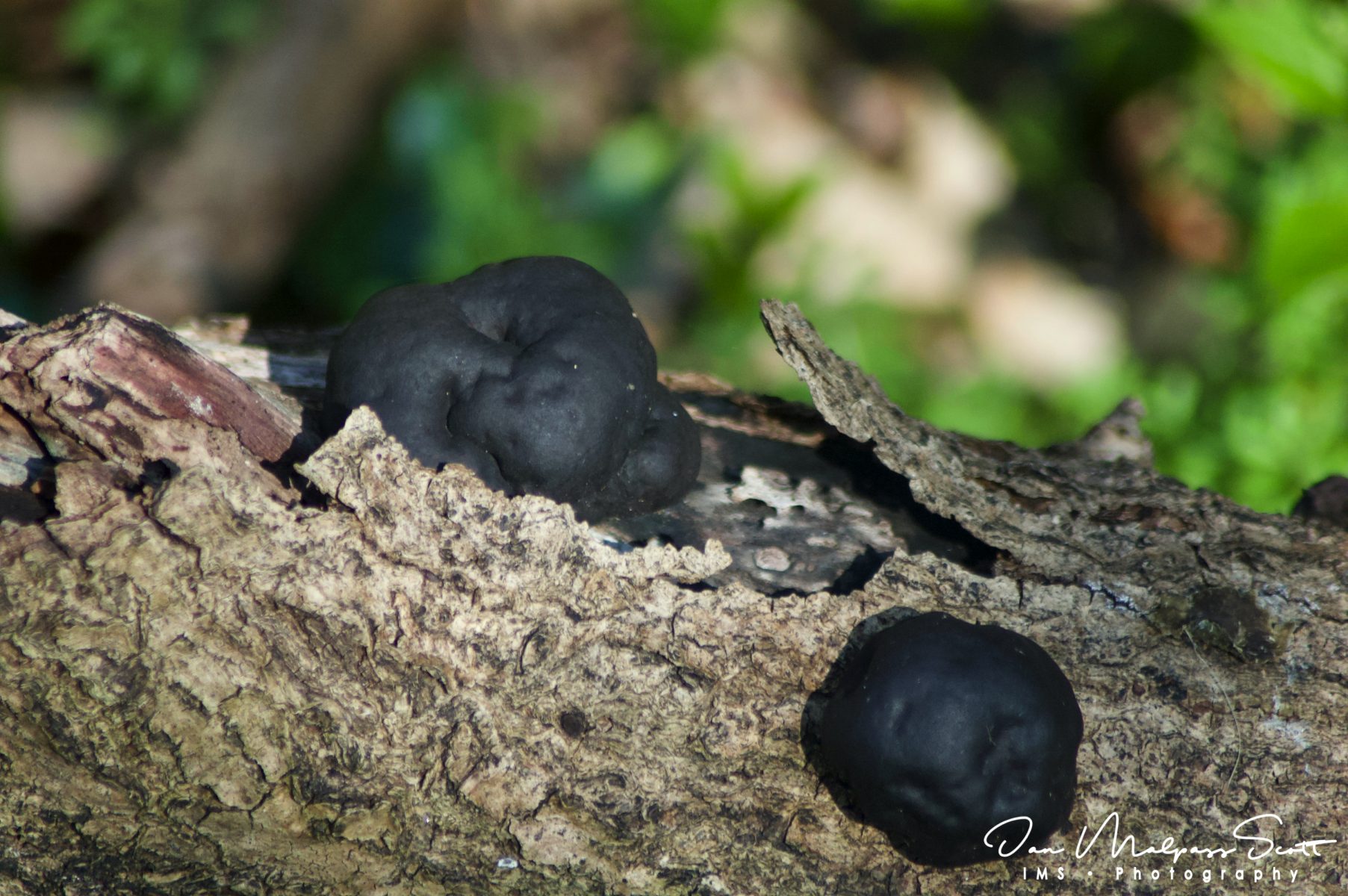King Alfred’s Cakes on a branch at Wylam, Northumberland
The inedible fungus Daldinia concentrica is known by several common names, including King Alfred’s cake, cramp balls, and coal fungus. As with other fungi the light spores are distributed globally and the fungi develop wherever conditions are suitable – it lives on dead and decaying wood, and is a common, widespread saprotroph.
The fungus is ball-shaped, with a hard, friable, shiny black fruiting body 2 to 7 centimeters wide. It resembles a chunk of coal, which gives it several of its common names, including coal fungus and carbon balls. According to legend, King Alfred once hid out in a countryside homestead during war, and was put in charge of removing baking from the oven when it was done. He fell asleep and the cakes burned. Daldinia concentrica is said to resemble a cake left to this fate.
The flesh of the fungus is purple, brown, or silvery-black inside, and is arranged in concentric layers. Most sources agree that like tree rings, these layers are related to seasonal growth. The asci are cylindrical and arranged inside the flask-shaped perithecium. When each ascus becomes engorged with fluid it extends outside the perithecium and releases spores.
D. concentrica contains several unique compounds, including a purple polycyclic pigment and a metabolite called concentricol, which is oxidized squalene. Many types of insects and other small animals make their home inside this species of fungus.


